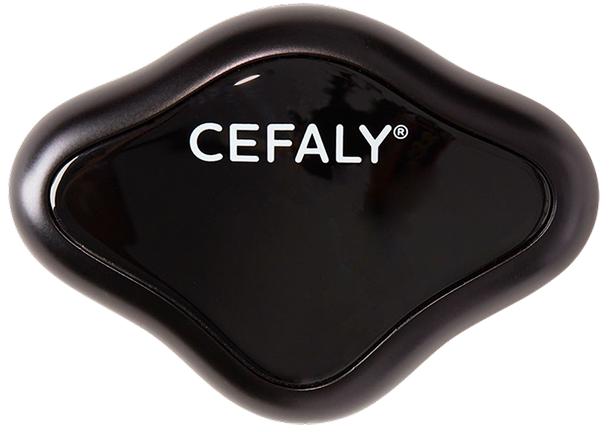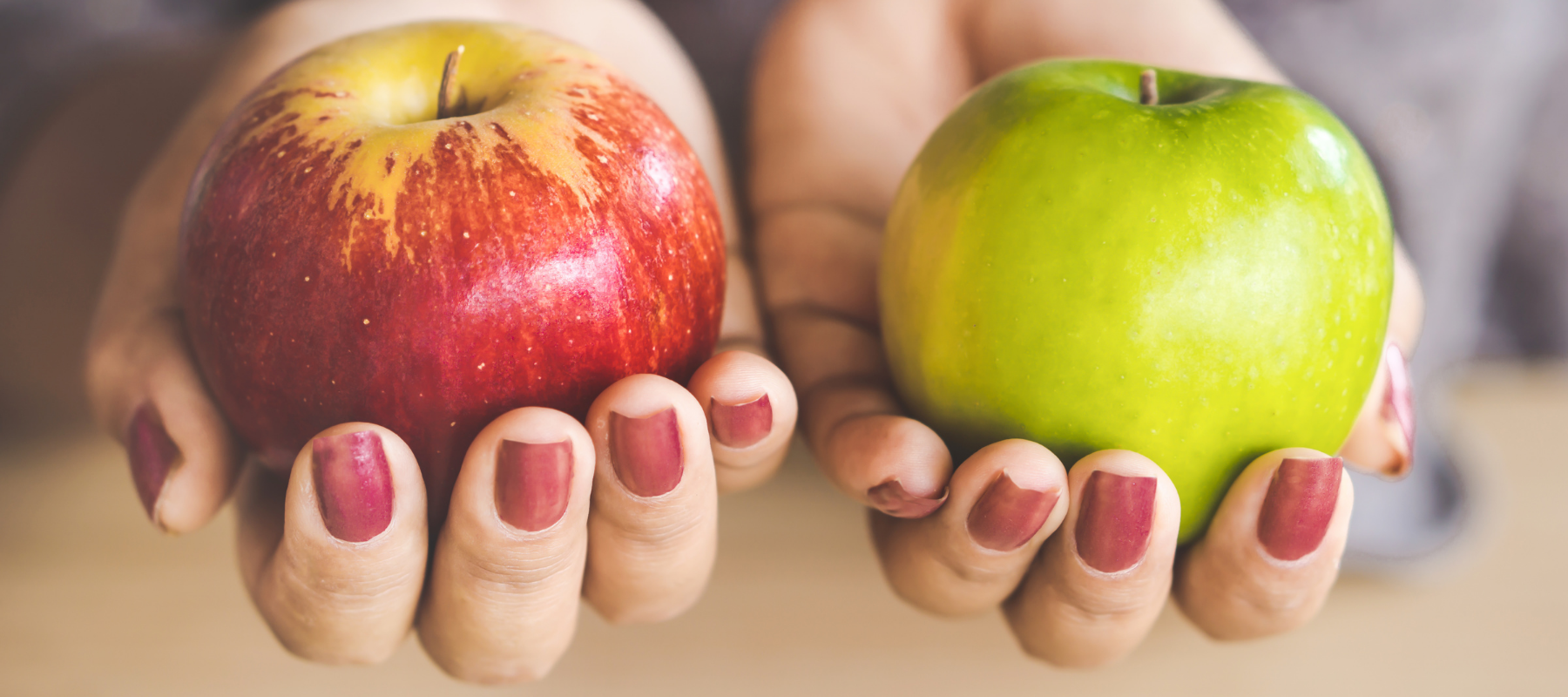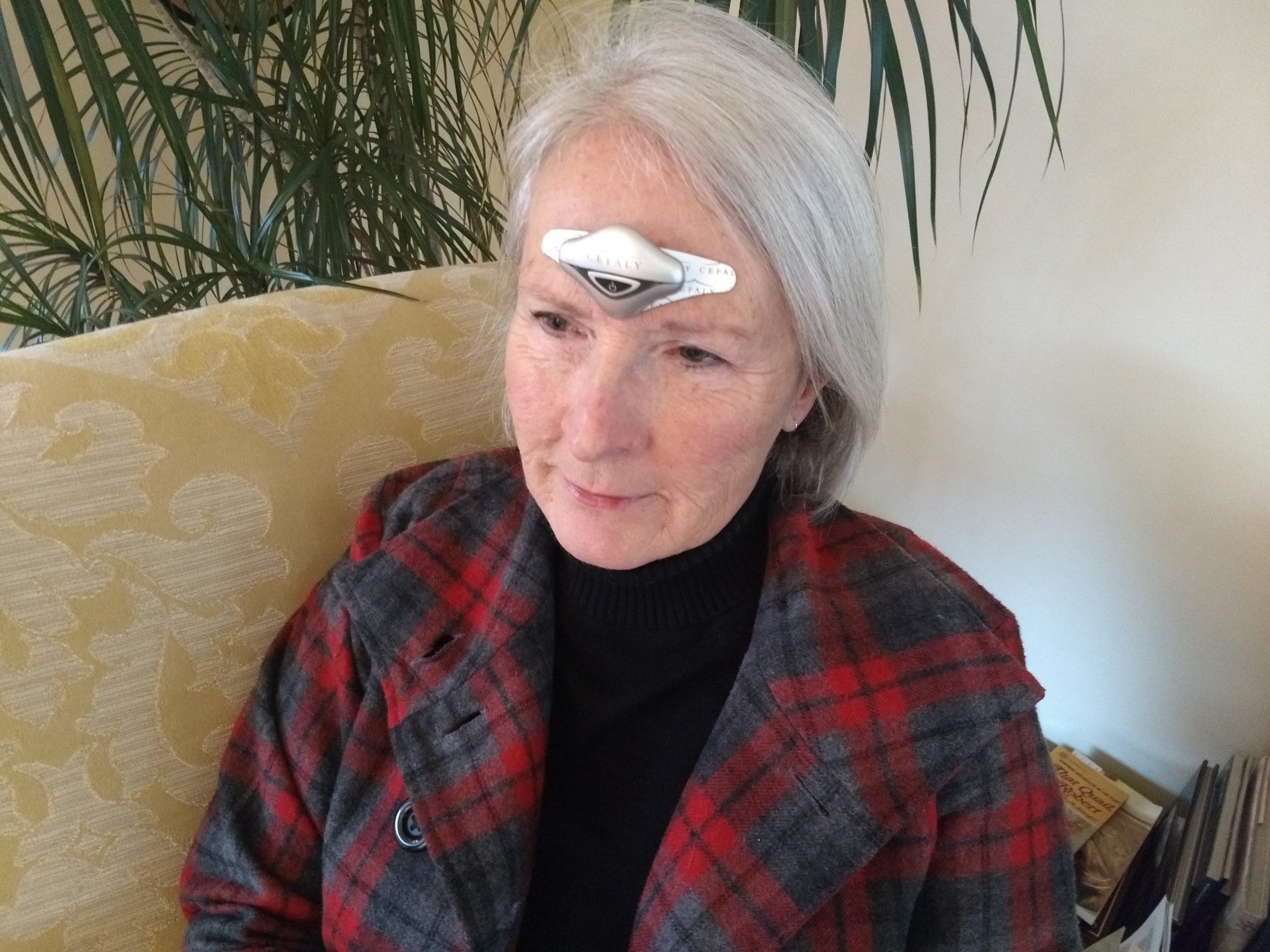When you live with migraine, overstimulation is your enemy. Intense stress, loud sounds, strong smells, bright lights, late nights… these and other factors can overwhelm your nervous system and trigger a migraine attack.
That’s why having a calming, restorative nighttime routine can help with migraine prevention. Ending your day on your terms — instead of collapsing into bed when you’re exhausted — sets you up for success the next day.
Ready to add CEFALY to your migraine prevention routine? Try the device risk-free for 90 days.
Step 1: Hydrate.
Do you wake up thirsty at night? Dehydration can interrupt your sleep and also cause migraine attacks. But if you chug water right before bed, you’ll have to get up to pee — and that’s not good for sleep either.
Instead, try to drink your 64 ounces/2 liters of water throughout the day. If you’re tired of water, you can drink herbal tea. Don’t drink alcohol or caffeine before bed, as these can mess up your sleep and potentially trigger an attack.
Step 2: Have a light, early dinner.
Eating a big meal too close to bedtime can cause indigestion and interrupt your sleep. You know your body best, so choose foods that sit easy on your stomach and don’t cause heartburn or acid reflux. Include some veggies, carbs and protein — but not too much salt, or you may find yourself dehydrated and thirsty.
A bedtime nibble is a good idea, too. “A high-carbohydrate snack, such as crackers and fruit or toast and jam, triggers the release of a brain chemical called serotonin, which aids sleep,” says WebMD. Eating a migraine-friendy snack also can help prevent your blood sugar from plummeting during sleep.
Step 3: Prioritize your own comfort.
This one comes to us from Jen of Momming wth Migraine. Put on your comfy pajamas, your soft slippers, and your coziest sweater. “All you’re doing is signifying to your body that it’s time to start winding down now,” she explains. Changing your clothes interrupts the go-go-go rhythm of the day and begins the soothing cadence of bedtime. Also, dim the lights. Lower the thermostat. Stretch. Calm your mind.

But listen: It’s OK if you’re not someone who meditates or does yoga by candlelight every night! What’s most important is doing what feels right to you. Experts say avoid screen time — but if watching a show is the most effective way for you to relax, then go for it! “I know it’s bad advice to eat in bed,” Jen says, “but I do eat in bed — because I like to.” That’s a good enough reason for anyone.
Step 4: Tidy key areas of your home.
Bedtime is not the time to start scrubbing the bathroom or decluttering the pantry. But a quick, 15- to 20-minute tidying session can smooth your morning routine. Identify the areas to focus on that will make the biggest difference in your mood and your stress levels. These may be your bathroom counter; your nightstand; your kitchen counters and sink; or your living room.
Remember, stress is the number-one most common migraine trigger. Taking small actions to reduce your stress can be a really effective component of natural migraine prevention.
Step 5: Be consistent and intentional about when you go to bed.
Work. Drive home. Take kids to their activities. Feed pets. Figure out something for dinner. Put kids to bed. Do a few last-minute chores. Scroll on your phone. Watch TV. Pass out.
So many people go to bed only once they’re so exhausted they just can’t do anything else. However, a regular bedtime routine is a powerful migraine prevention tool. The migraine brain hates inconsistency, so it really benefits from a set sleep schedule. Yes, even on the weekends! So if your weeknight routine is a 10:30 p.m. bedtime and a 6:30 a.m. wakeup, keep it going on Saturday and Sunday.
Get Drug-Free Migraine Relief With CEFALY
Shop Now
90-day money back guarantee
FDA-cleared
financing available
Step 6: Do your CEFALY migraine prevention treatment before you go to sleep.
This low-frequency, 20-minute treatment desensitizes the trigeminal nerve over time, making migraine attacks less frequent. The PREVENT mode is most effective when you do it every single day. Here’s your treatment mantra: PREVENT every night = more migraine-free days to enjoy.
Most users love doing their CEFALY PREVENT treatment just before bed. The gentle neurostimulation often has a mild sedative effect, making you feel sleepy, drowsy, or relaxed.
- Wash your face with basic soap (don’t apply any serums or lotions to your forehead before treatment).
- Attach the electrode to your clean, dry forehead.
- Get into a comfortable position, reclining or lying down. (Did you know that elevating your legs can reduce 2 a.m. pee breaks? “Some nighttime urination happens because your body reabsorbs water from your legs once you’re lying down. If you put your legs up a few hours before bed, you can allow this process to take place without causing sleep interruptions,” the Sleep Foundation explains.
- Pair your CEFALY with the CeCe app so you can track your progress.
- Press the button twice, with a short pause in between, to start the PREVENT session.
- Stabilize the stimulation at an intensity level that’s comfortable for you (but still noticeable).
- During your session, you can meditate, listen to music or a favorite podcast, or just rest.
- Once the session ends, put away your device and electrodes, apply your face moisturizer, and get ready for sleep.
It really is that easy. As Jen of Momming with Migraine puts it, “If you want to decrease the migraine days that you have, you may as well try an FDA-cleared, non-prescription way that is proven to do that.”
Try CEFALY in your home for 90 days. If it doesn’t relieve your migraine pain and help reduce your migraine days, you can return it within that window. Remember, you can schedule a free session with a CEFALY Coach to make sure you’re getting the maximum benefit from your CEFALY routine.














